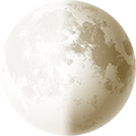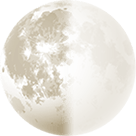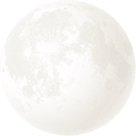December 2022 Night Sky AstronomyNight Sky viewing guide for December 2022 including Moon phases, occultation of Mars, conjunctions, Geminid meteor shower and Deep Space Objects to see.
Decembers Moon Phases
In December, winter sets in and the Full Moon is called the Cold Moon. It is also called Long Nights Moon, and the Moon before Yule.
Full Moon and New Moon for December 2022

December 2022 First QuarterThu 1st Dec

December 2022 Full MoonThu 8th Dec

December 2022 Last QuarterFri 16th Dec

December 2022 New MoonSat 24th Dec
Notable Events in December
There's an opportunity to observe a lunar occultation of Mars as it reaches opposition, on the 8th of December 2022. See the next section for details.
December Planets
On the morning of the 8th of December 2022, Mars will be occulted by the full Moon. Mars will disappear behind the Moon's western edge at 04:45 UT and will take 36 seconds to be fully covered. Mars will then reappear at 05:56 on the eastern side and take 34 seconds to be fully shown. Times are correct for the centre of the UK and will vary up to a few minutes depending on location.
Jupiter is a splendid object visible in the southern sky as soon as darkness falls. Using higher magnifications you will see the yellowish flattened disc and the four Galilean satellites. You should be able to follow the movement of these moons from night to night. It will be visible in the mornings from January to May, evenings from May to November, and mornings again from mid-December to the end of December.
Saturn is visible in the mornings from late January to early July, and then in the evenings from July to December.
Throughout December, Venus, Saturn and Jupiter will appear equally spaced towards the southwest after sunset, with the moon passing close by each of them from the 6th to the 8th.
December Meteor Showers
The annual Geminid Meteor Shower takes place in December, with the peak on the 13th. It's one of the favourite observing events of the year with many bright meteors expected to be visible.

The Geminid meteor shower reaches peak activity around 14th December, making 13th and 14th December ideal times to look for meteors. The Geminids provide good activity before midnight as the constellation of Gemini is well placed from 10 pm onward. Around the peak of the 2021 Geminid meteor shower, the Moon is in an advanced waxing phase. Although it will be 78% illuminated in a waxing gibbous phase on the evening of 13/14th December, it sets around 03:00 UT on 14 December. Given the long dark December nights, this means there will still be around three hours of darkness left to enjoy what the shower has to deliver.
The Ursids is a minor meteor shower producing about 5-10 meteors per hour. It is produced by dust grains left behind by comet Tuttle, which was first discovered in 1790. The shower runs annually from December 17-25. It peaks this year on the night of the 21st and the morning of the 22nd. This year, the nearly new moon will leave dark skies for what should be a really good show. The best viewing will be just after midnight from a dark location far away from city lights. Meteors will radiate from the constellation Ursa Minor, but can appear anywhere in the sky.

December Deep Space Objects
The Orion Nebula (M42 and M43) are prime targets in the winter months hanging in the South Eastern sky. They are easy to locate as they form the sword hanging from Orion's Belt.
Taurus contains two glorious winter deep sky objects - the Hyades and Pleiades star clusters. Both can be seen with the naked eye and are wonderful sights in binoculars, and small telescopes will further reveal the glittering array of bright, blue stars that make up the Pleiades. The Crab Nebula (M1) is almost directly overhead during the early evening hours. You do need a dark, clear sky, to see the Crab Nebula as it tends to get lost in light pollution. It may be just barely visible as a dim patch of light in good binoculars, whilst telescopes greater than 3" should be able to resolve more detail.

A short hop into neighbouring Auriga will bring you to the three exquisite open clusters - M36, M37 and M38 all of which can be spotted with binoculars and lie in the region between Beta Tauri and Delta Aurigae.

With dark skies, you should be able to spot the double cluster Perseus with the naked eye. It's another great target for small telescopes and consists of the clusters NGC 869 and NGC 884.
The Andromeda galaxy is a favourite of mine, directly overhead in December and slowly setting towards the west during January and into February. This large galaxy can be seen as a faint fuzzy blob with the naked eye under dark skies, but it's best to see through binoculars. Through a telescope, the Andromeda Galaxy looks quite diffuse. Use your lowest power; the full extent of the galaxy is huge - five times as large as the full moon. It is the most distant object you can see with your naked eyes being two million light years away.











